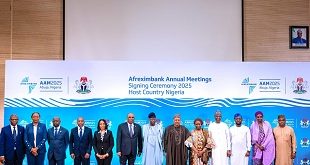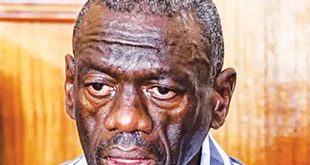One of them is nicknamed “Arab”. He does not know when he was born, never went to school and joined Al Shabaab for lack of anything else to do. Al Shabaab gave meaning to his life; its ideology of fighting for Islam tends to unite many Somalis from different clans and sub clans who would otherwise never work together. And this unifying ideology is what is missing in the TFG – this sense of a common purpose. Some of the Somalis I met were critical of the politicians seeing them as seeking to build their powerbases around the same divisions that have wreaked havoc and dismembered their country.
The one thing I noticed is that UPDF soldiers work with former Al Shabaab fighters as brothers. They eat the same food around the same table – there was no discrimination whatsoever, not even the slightest sign that they are treated with any suspicion. I found this puzzling. Is UPDF being naive? I asked my brother? No, he told me, we can feel many things intuitively. Kayanja told me that when he was training his battle-group with American “counterterrorism experts” in Singo, they told them very many valuable things but equally very many erroneous ones. “Americans think Al Shabaab, because they are labelled terrorists, are enemies whom you should never bring near both organisationally and physically. In UPDF we do not agree with such notions and it explains why we are successful with only 6,000 troops where Americans failed with over 50,000.”
I saw hope in the Special Force of TFG. Its combatants are young, passionate and proud. They have a strong ideological conviction of ridding their country of extremism and helping build a functional state and prosperous economy. The few minutes (perhaps 30) I spent talking to them as they broke their fast and prepared to go on a search and destroy mission that evening was perhaps one of the most encouraging moments of my stay in Mogadishu. I just fell in love with these youthful soldiers and wanted to go with them on their missions and spend an entire day with them. For “security” and other reasons of program I could not. Their rapport with UPDF officers and men was great; and their admiration of our troops amazing.
I was also quick to notice that it does not cost much to transcend the dichotomy of enemy and ally. I spent a couple of days with some of the captured, rescued or surrendered Al Shabaab fighters now working with UPDF. In those few days, a bond of friendship and mutual obligation with many had emerged. I wondered whether it is a shared race (identity can be a powerful emotion)? Or was it my naivety taking advantage of me? In Lower Shebelle region, I asked the governor Abdul Kadhir Sidi to hire the former Al Shabab chief of revenue collection, Hussein Mohamed, as his tax man advising that this man’s skills are critical for the TFG. Kayanja later called me to say that Mohamed had been hired as I had asked, and he had even helped them arrest an Al Shabaab fighter passing through the customs offices by alerting UPDF.
It became clear to me that solving African problems actually needs African solutions, even though there is also a lot to learn from outsiders. In fact one of the ways through which people like Museveni and President Paul Kagame of Rwanda have contained conflicts has been to avoid treating their adversaries as permanent enemies. For Museveni historically, the strategy has been to defeat the enemy militarily and yet not subject them to the humiliation of defeat. Just when Museveni feels the enemy is defeated, he enters into “peace talks” (even though in effect they are actually surrender talks) with them. Consequently, he has tended to integrate enemy combatants into the UPDF, the political leaders into his government as ministers and some get financial compensation to go home.
In Rwanda, a similar logic has been applied. Whether Kagame learnt is from Museveni or it was a pragmatic response to the conditions on the ground is not important. After 1994, the RPF moved quickly to integrate officers and men of the Armed Forces of Rwanda (FAR), the army they had routed, into the RPA now RDF. In July 1994 when it captured power, the RPA was only 18,000 troops strong. By March 1995, they had integrated over 25,000 ex-FAR, making it the majority in the new army. When Rwanda entered into Congo in 1996, over 65 percent of the army was Ex-FAR. In fact it was largely the Ex-FAR units that were sent to rout the interahamwe and return civilians being hostage in refugee camps. When international human rights groups claim that RPF committed genocide against Hutu refugees in Congo, they are actually saying that Hutu officers and men committed genocide against their kith and kin – utter nonsense!
It is not clear whether Uganda’s attempt at state building in Somalia will work. It is really too early to tell. Besides, immediately there is peace in Somalia, the attention of its people will shift from the threats of Al Shabab to even little mistakes by our troops. Once Al Shabaab is finished, even small transgressions now tolerable are likely to become explosive. Assuming a UPDF mamba on one of its forays knocked and killed a Somali child or an errant UPDF soldier raped a Somali woman. Such small incidents can be tolerated now but will become fault lines tomorrow. How will UPDF cope with growing Somali nationalism demanding end of liberation that will now have turned into occupation? We do not know.
For now, I can only conclude by re-echoing the lesson I got from my brother, Col. Kayanja: UPDF has succeeded with only 6,000 troops in Somalia where America failed with 50,000 – not because it has superior fighting skills but because it has a superior ideology and a superior counter terrorism doctrine.
amwenda@independent.co.ug
 The Independent Uganda: You get the Truth we Pay the Price
The Independent Uganda: You get the Truth we Pay the Price



Andrew, this article is complete without telling us the reason behind UPDF’s success. Was it the use of counterinsurgency measures, or the use of Somali civilians in the fight against the Al-Shabab? What did we do differently that we can be proud of? Is it possible that we succeeded because of maximum fire power or because of combine effort from the AU and UN?